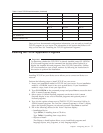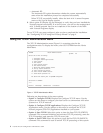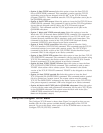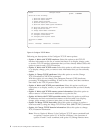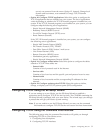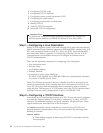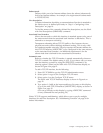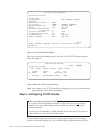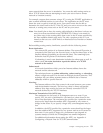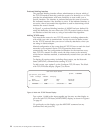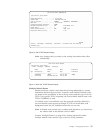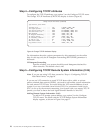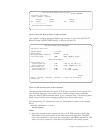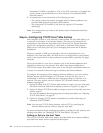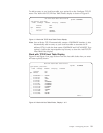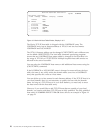same network that the server is attached to. You must also add routing entries to
allow TCP/IP clients that are attempting to reach your server from a remote
network to function correctly.
For example, suppose that someone using a PC is using the TELNET application to
start a remote terminal session on your server. The application on the PC must
know the route or path to reach the server. Your server must also be able to
determine the route back to the PC. If the PC and your server are not on the same
network, a routing entry must exist on the PC and on your server.
Note: You should plan to have the routing table defined so that there is always an
entry for at least one default route (*DFTROUTE). If there is no match on
any other entry in the routing table, data is sent to the IP router specified by
the first available default route entry. The only exception to this is if you
intend to dial out over a SLIP link to an Internet Service Provider or another
remote host.
Before adding routing entries, familiarize yourself with the following terms:
Route destination
The network ID portion of an Internet address. The network ID portion is
composed of the first byte, the first two bytes, or the first three bytes of the
Internet address (depending on the network class). The remaining bytes
define the host ID portion of the Internet address.
If subnetting is used, route destination includes the subnet part as well. In
other words, the route destination equals the address of a TCP/IP
network to be reached.
Subnet mask
A bit mask that defines which part of an Internet address forms the
network and the subnetwork.
The technique known as subnet addressing, subnet routing,orsubnetting
allows a single network ID to be used on multiple physical networks. This
technique lets you define separate routes to different sets of Internet
addresses within a specific network.
Next hop
The Internet address of the first system in the route between your system
and the destination network. The next hop value is always an Internet
address. Next hops need to be hosts on a directly connected TCP/IP
network defined by the TCP/IP interfaces.
Maximum Transmission Unit (MTU) size
The maximum size (in bytes) of IP datagrams sent on a route. If you
specify *IFC, the size is calculated for you based on values found in the
server line description. The maximum size specified for a particular route
must not be larger than the smallest MTU supported by any router or
bridge in that route. If you specify a larger size, some datagrams may be
lost.
In addition, the MTU specified for a particular route should not be larger
than the smallest MTU supported by any system used as an IP router for
that route. If you specify a larger size, performance may degrade as
systems attempt to divide the IP datagrams into smaller fragments.
For additional information about setting the MTU, see Appendix A.
Configuring a Physical Line for TCP/IP Communication.
Chapter 1. Configuring TCP/IP 13



